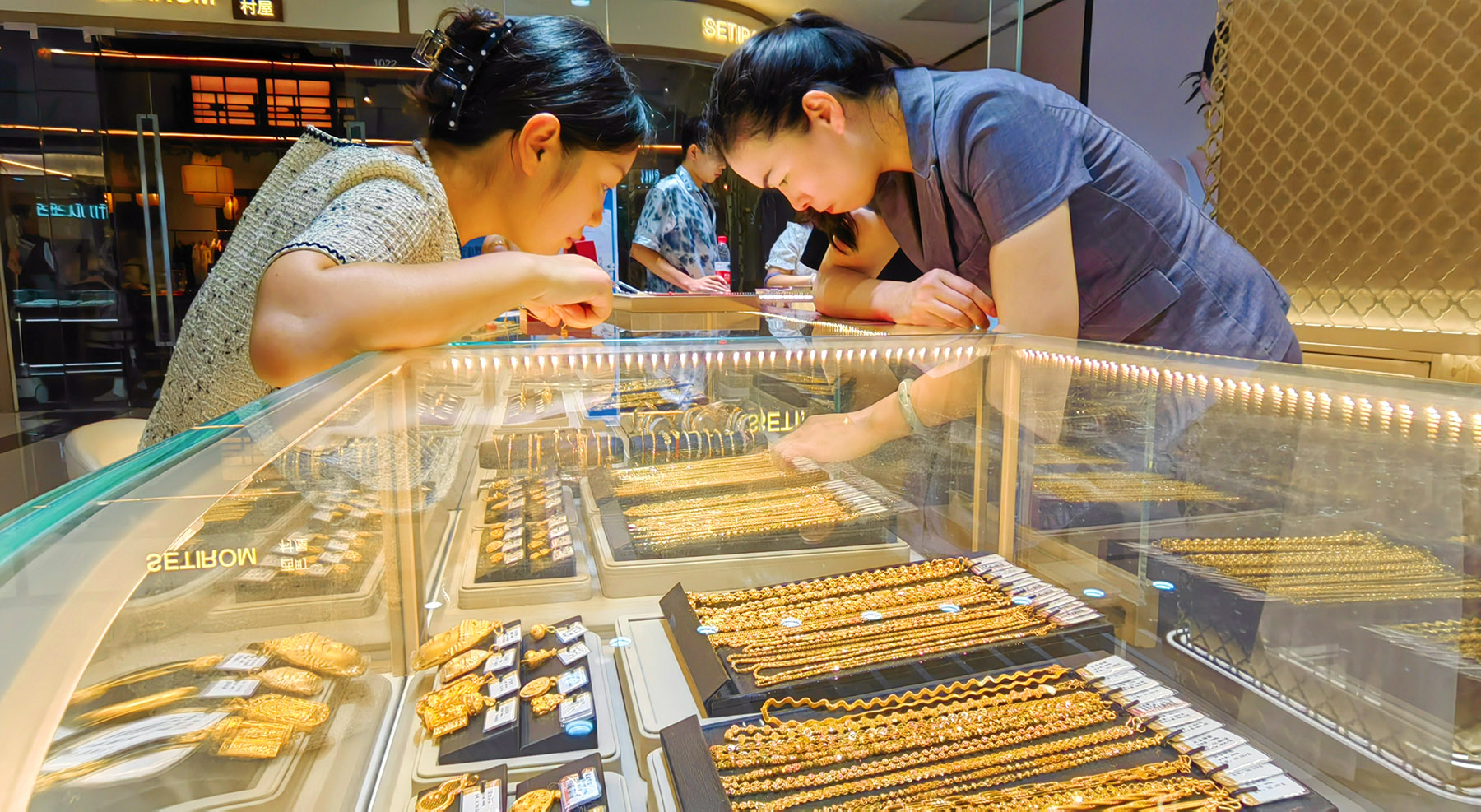
Gold surged to a fresh record this week, with prices briefly hitting $3,500 an ounce in Asian trade on Tuesday, as industry players reported mixed interim results.
Combined revenue at six listed firms fell 5 percent to 88.66 billion yuan ($12.41 billion) in the first half, but aggregate net profit jumped 37 percent to 5.23 billion yuan, largely on the back of outsized gains at Laopu Gold.
Laopu's revenue soared 251 percent to 12.35 billion yuan, while profit surged almost 291 percent to 2.35 billion yuan. Its decision to raise prices last month has resulted in long lines in front of its stores.
READ MORE: China likely to continue buying gold
By comparison, Lao Feng Xiang's revenue slid 16.5 percent to 33.36 billion yuan and net income dropped 13.1 percent to 1.22 billion yuan. China National Gold Group's revenue declined 11.5 percent to 31.10 billion, with profit tumbling 46.4 percent to 320 million.
Chow Tai Seng's revenue sank 43.9 percent to 4.60 billion yuan, with profit down 1.3 percent at 590 million yuan. CHJ Jewellery posted revenue of 4.10 billion yuan, up 19.5 percent, and net income of 330 million yuan, a 44.3 percent increase. Zhou Liu Fu's revenue rose 5.2 percent to 3.15 billion yuan, with profit up 11.9 percent at 420 million yuan.
The uneven results reflect the impact of rising bullion prices on consumer behavior.
The Au9999 benchmark on the Shanghai Gold Exchange ended June at 764.43 yuan a gram, up 24.5 percent compared with the beginning of this year.
China's gold consumption in the first half fell 3.5 percent to 505.2 metric tons, with jewelry demand plunging 26 percent while purchases of bars and coins jumped 23.7 percent.
Laopu Gold has emerged as the sector's biggest beneficiary.
With just 41 directly operated boutiques, the company generated average sales of 459 million yuan per store, the highest among domestic and global peers, according to consultancy Frost & Sullivan. Its loyalty program has expanded by 130,000 members since December to 480,000, with more than three-quarters overlapping with buyers of Louis Vuitton, Hermes, Cartier, Bvlgari and Tiffany.
By positioning itself between top shopping malls and adopting a one-price model, Laopu Gold has persuaded affluent customers to view bullion purchases like luxury handbags.
Explaining factors that push up gold jewelry products such as Laopu, Lao Miao and Chow Tai Fook's HUA series, Chloe Zhu, consultant of Euromonitor International, said, "Chinese consumers have a heightened sense of national identity and pride, and a greater appreciation for Chinese culture, driving the popularity of new-Chinese style in all walks of life."
Zhu added: "The above brands use ancient Chinese craftsmanship to give gold jewelry a cultural background and meaning, which greatly satisfies the values of young consumers and provides sufficient added value."
Other mid-tier players have leaned on niche strategies. CHJ Jewellery capitalized on small-gram designs and IP collaborations targeting Gen-Z women, lifting profits despite modest sales growth. Zhou Liu Fu offset weaker franchise revenue with a 34 percent jump in e-commerce, which now makes up more than half of total sales.
ALSO READ: WGC: Central bank gold buying slows after record rally cools demand
Thanks to the precious metal's value proposition, gold jewelry has become not only a source of consumption, but also an investment for Chinese consumers.
Zhu of Euromonitor International said it is clear that overall shares of gold jewelry in the Chinese jewelry market are on the rise. Actually, China's fine jewelry market is overwhelmingly made up of gold jewelry. The main reason behind this is actually the rise in gold prices.
"Gold jewelry is very special in the Chinese market, similar to the diamond ring in the West, and can be applied on birthdays and festivals in addition to weddings," Zhu said.
"Whether the higher gold prices will continue to drive the gold jewelry market in China, and indeed the jewelry market in general, remains to be seen."
Contact the writer at wangzhuoqiong@chinadaily.com.cn


